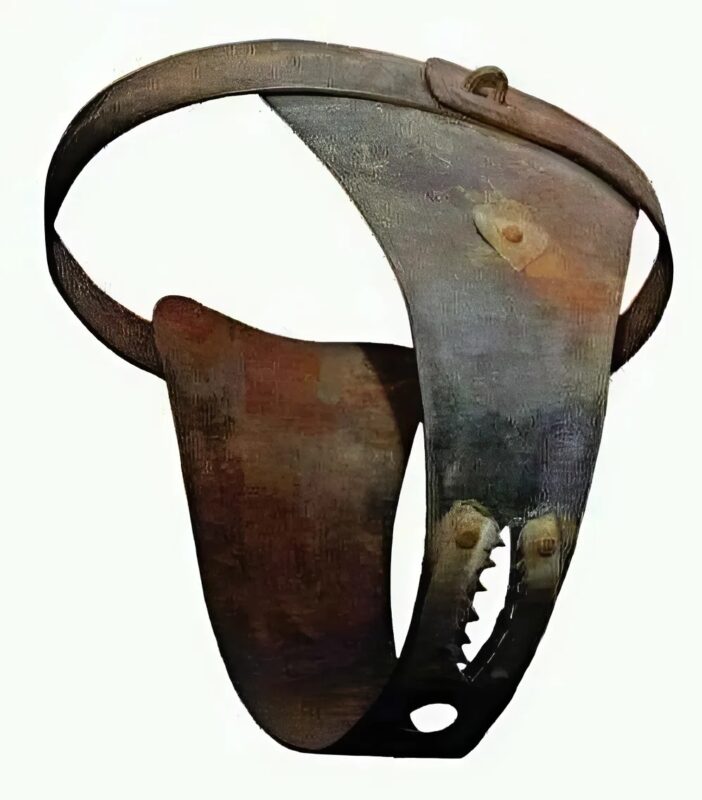Imagine living in a time when a simple metal key symbolized more than just access—it meant authority, loyalty, trust, and, in some cases, control over another person’s freedom. In the medieval world, keys were deeply symbolic. They weren’t just for locking away valuables or guarding secret passageways—they represented responsibility, power, and even oppression. Among the most controversial stories linked to keys in this era is the legend of the chastity belt, a device supposedly used by knights to keep their wives faithful while they went off to war or on crusades. The idea is both fascinating and disturbing, but how much truth does it really hold?

The image of the chastity belt has long been associated with iron contraptions locked around a woman’s waist, allegedly secured with a key held only by her husband. This key was more than metal—it stood for complete control over her body and her fidelity. But historians have questioned the legitimacy of this tale. Were chastity belts truly worn by women during medieval times, or is this narrative more myth than fact? Many believe that the story is rooted more in the fear of infidelity and the desire to control women than in actual historical practice. Some physical examples of chastity belts do exist, but they mainly date back to the 16th or 17th centuries and were likely created as torture devices, theatrical props, or symbolic relics rather than real medieval tools. The idea that these were used commonly during the Middle Ages is largely unsupported by solid evidence.
Even if a few primitive versions of these belts existed, practicality raises a major concern: hygiene. In the Middle Ages, people bathed infrequently, and sanitation as we know it was nonexistent. Wearing a metal device in such conditions could cause infections, rashes, and even deadly medical complications. With little access to healthcare, the risk would have been immense. This alone casts serious doubt on the idea that chastity belts were ever used regularly. In reality, the discomfort, health risks, and maintenance challenges make it highly unlikely they were ever a widespread practice.
Medieval hygiene itself was a harsh reality. Cleanliness often depended on one’s social status, religious views, or regional customs. While some cultures valued bathing, others feared that bathing opened the pores to disease. This belief especially spread during plague outbreaks. Most people didn’t take full baths and instead wiped themselves with damp cloths or used herbs and scented oils to cover body odor. Women had it particularly tough when it came to hygiene. With no modern products for menstrual care, they relied on cloths, wool, or moss. The idea of wearing a locked metal belt through all of this raises serious practical concerns.
Even beyond chastity belts, the key held significant meaning in medieval society. Women—especially those who managed households—often wore keys at their waist, symbolizing their role in running the estate. This position came with great responsibility and trust. A woman might oversee food storage, manage servants, and even handle important financial decisions. On the other hand, knights and noblemen held keys to armories, treasure chests, and secret rooms, all of which reflected their status and authority. The presence of a key wasn’t just about physical security; it was about social power.
Despite the restrictions placed on women, many found ways to assert control. Some noblewomen managed entire estates while their husbands were away. They made financial decisions, negotiated trades, and influenced politics. In rare cases, women used their access to keys to challenge gender roles—unlocking forbidden doors, protecting family secrets, or even seeking independence. These examples show that keys were more than symbols of male control—they could also be tools of female empowerment.
So, were chastity belts real or just a scare tactic? Evidence suggests they were more of a symbolic warning than a real device worn regularly. Most written references appear in the 15th century, not earlier, and many of the artifacts found in museums today are believed to be later creations—possibly from the Victorian era, when society was fascinated by and often distorted the idea of medieval morality. Victorian collectors and moralists may have exaggerated or fabricated stories about chastity belts to promote their own views on purity and control.
In the end, the story of medieval keys and chastity belts tells us more about historical attitudes toward power and control than about any widespread physical practice. The lack of reliable records, combined with the health risks and logistical impracticality, make it unlikely that chastity belts were ever widely used. Instead, they may have served as psychological tools to maintain dominance or promote moral ideals. Whether used to secure a treasure chest or control access to a person’s body, keys in medieval times were deeply tied to the themes of trust, power, and fear. They reflected not only the values of the time but also the complex, often harsh dynamics of medieval life. While we may never unlock all the secrets of that era, what remains clear is that behind every key was a story of authority, control, and the human struggle for freedom.





